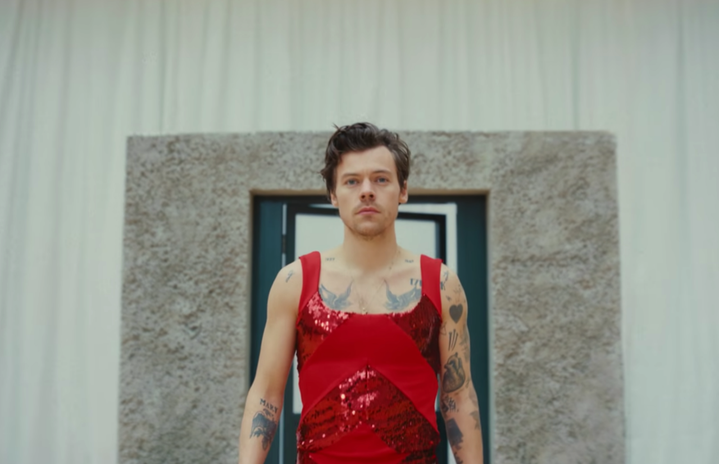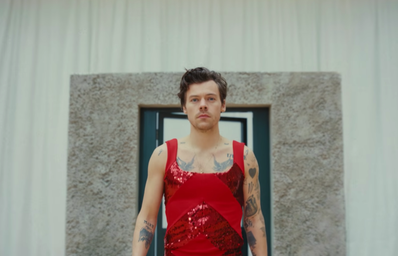The Death of the Popstar is an oft-bemoaned phenomenon. No one does it like Gaga or Elton or insert Pop Act here. I have to partially concede this point: pop in 2022 is not like Pop in 1980, certainly. Streaming services, for one, have levelled the path to fame some: everyone from Billie Eilish (a great popstar) to Dixie D’Amelio (an eh popstar) has become famous through a streaming/online music service (Soundcloud and TikTok respectively). Secondly, with the cultural shift (at least on the part of Gen Z) towards equality and diversity, the music world has had to also diversify itself. So, no, pop stars are not necessarily being forged by the traditional means of playing gigs as an unknown, compiling a demo and handing it to a manager or record executive and then finally scoring a record deal. However, along with this, I’d argue that the pop landscape has also morphed into a terrain more controlled by subgenres or musical niches than ever. So, here’s a brief list of some of the niches ruling pop today.
- Classic Popstars
Classic Popstars are precisely what the term implies: mega-famous chart toppers with a repertoire that is mostly upbeat and ultra-catchy (with the occasional ballad thrown in there).
Harry Styles
Styles is a ubiquitous figure as a celebrity nowadays. He shot to fame as a member of One Direction, which was formed on the X Factor. Styles has currently released two albums, the self-titled Harry Styles and Fine Line (a third album, Harry’s House, is slated for release on May 20th). Harry Styles is a moody, soft rock-infused treatise on loneliness and a painful breakup (see Meet Me in the Hallway, Sign of the Times, From the Dining Table). Fine Line is sort of its older, wiser brother, one turned cheerful and effervescent after a period of wistful rumination (see Sunflower Vol. 6, Treat People with Kindness, Canyon Moon). The leading single from Harry’s House, As it Was, is somewhere between the two previous albums: still cheery, but a little wistful too.
Lizzo
Lizzo, a proudly pro-feminist, body positive musician, dabbles mostly in RNB, Soul and Pop with a dash of Rock. Lizzo’s songs are generally funky, infectious rallying cries for woman to accept their inner divinity (in the sense of self-empowerment, rather than). See: Truth Hurts, Good As Hell, Like A Girl, Tempo.
Rina Sawayama
The Japanese-born, UK-raised Sawayama is a recent addition to the Pop category, given that her music has a strong indie and alt bent to it. Instead, it’s more Sawayama’s staggering stage presence that cements her as a traditional popstar – she’s been compared to Lady Gaga while on tour. Sawayama is joyous on stage, flinging herself across the stage with gleeful abandon, springing into the air as though she can transfuse that selfsame abandon into the bodies of every one of her supporters. See: XS, Lucid Dreaming, Chosen Family, Stfu!
- Indie Popstars
Indie Popstars are characterized by their pared-back vocals, which often boast minimal production and a naturalistic, folksy sound.
Gracie Abrams
With her spoken-word-esque vocals, Gracie Abrams is best compared to Taylor Swift and Olivia Rodrigo. In fact, she’s counted as one of Rodrigo’s influences. Abrams sings both mournfully and gently about getting older, breakups, fights and the general malaise of early-adulthood. See: 21, Friend, Tehe, Camden.
MXMTOON
MXMTOON, who took her gaming moniker as her stage name, specializes in diarizing that languid, late-Sunday-afternoon-drive feeling. She also deals with other common experiences such as anxiety over school dances and seasonal depression. See: Bon Iver, Seasonal Depression, Cliché, I feel like Chet, Prom Dress.
Griff
London-based Griff is also a singer straddling two genres, namely indie pop and mainstream pop. Like MXMTOON, Griff is also a “diarist” in the content of her songs, but with more dance vibes. See: Black Hole (and its remix), Forgive Myself (Jayda G Remix) and Inside Out (ft. Zedd)
Celeste and H.E.R.
Both Celeste and H.E.R. specialize in soft RNB ballads. Their music is soothing, but also strikes up a deep thinking mood. See: Strange (Celeste), Gone Away (H.E.R.) and One Second (Stormzy ft. H.E.R.)
- K-Pop
Korean Pop, which forms part of the Korean Wave currently sweeping the West, is a Pop behemoth all its own. Spanning many genres, Korean Pop is noted for the manner in which it forms its stars (titled idols). Idols are signed to entertainment companies in Korea as trainees (possible idols) and undergo rigorous training in the fields of vocals, dance and overall stage presence in which they are continually assessed until they either are or aren’t selected to debut as an idol (either a solo idol or as part of a group). K-Pop has many famous acts, all with their own specialized genres, sound and dance routines.
BLACKPINK, ITZY, Aespa
It may seem a little odd that I’m grouping together three girl groups who are technically one another’s competition, but all three of these bands routinely deliver Pop bangers: bass-thumping hits full of swagger. See: DDU-DU DDU-DU, Kill this Love, Crazy Over You (BLACKPINK), In the Morning, SHOOT!, LOCO (ITZY), Black Mamba, Savage (Aespa)
BTS, STRAY KIDS
BTS is both K-Pop’s most famous and most popular band. As such, they’ve covered a lot of genres. I’m choosing to focus on their songs that are more rap-infused here – the ones equipped with crazy beats and crazier bars. STRAY KIDS is known for their heavy dance music and epic, pounding choruses. See: UGH!, Anpanman, Ddaeng (all by BTS), Daechwita (by SUGA of BTS under his alternate stage name Agust D), Maniac, God’s Menu, Thunderous (all by STRAY KIDS)
TXT (TOMORROW X TOGETHER), ENHYPHEN
TXT and ENHYPHEN mostly produce a variety of Pop that runs the gamut from soft and gentle to catchy and vibey. See: Anti-Romantic, Love Sight (by TXT), PS5 (Salem Ilese ft. TXT), Fever, Blessed-Cursed, Given-Taken (by ENHYPHEN).
And there it is – my list of curated pop niches. Hopefully it introduces you to a new artist. Enjoy!


